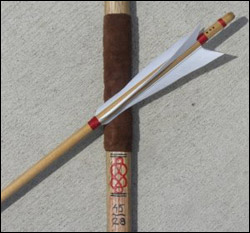There chanced to be a Pedlar bold,
A Pedlar bold there chanced to be;
He put his pack all on his back,
And so merrily trudged over the lea.
By chance he met two troublesome men,
Two troublesome men they chanced to be,
The one of them was bold Robin Hood,
And the other was little John so free.
From an English Ballad of the 1600’s
“…puts a brilliant spin on the traditional tales of Robin Hood and Maid Marian.”
School Library Journal on The Youngest Templar: Trail of Fate
It is interesting to think how often history and therefore course of the world turns on sometimes small things. One of those history changing inventions was the English Longbow. It could be argued that without it, England as we know it today might never have existed.
Robin Hood is said to have been the greatest archer in England in his day. Regardless if this is true or not, if the real figure that inspired the heroic Robin Hood really did live in the forest then he was no doubt familiar with the Longbow. Growing up in the forest, relying on its bounty for your livelihood, a bow would have been like another arm.
 Most historians believe the longbow was developed in Wales around the time of the Norman invasion. Of course, bows had been used for hunting and warfare for centuries by then, but in Wales, a special new kind of weapon developed. Fashioned from the wood of the yew tree, these were remarkable weapons and trees were cut and the wood cured for 2-4 years before a bowyer would fashion it into a bow stave. Yew wood was used because the interior wood, or heart wood, was strong, while the outer wood was tensile and strong. The bowstrings where made of linen, hemp or what Americans would call rawhide and the English might call ‘hoppus’ at the time. The bow staves were anywhere from 4′ to 6′ feet long. Hence the name ‘Longbow.’
Most historians believe the longbow was developed in Wales around the time of the Norman invasion. Of course, bows had been used for hunting and warfare for centuries by then, but in Wales, a special new kind of weapon developed. Fashioned from the wood of the yew tree, these were remarkable weapons and trees were cut and the wood cured for 2-4 years before a bowyer would fashion it into a bow stave. Yew wood was used because the interior wood, or heart wood, was strong, while the outer wood was tensile and strong. The bowstrings where made of linen, hemp or what Americans would call rawhide and the English might call ‘hoppus’ at the time. The bow staves were anywhere from 4′ to 6′ feet long. Hence the name ‘Longbow.’
The Welsh were deadly with the weapon. So deadly in fact, that English Kings would forcefully conscript Welsh archers into their armies. When others saw its effectiveness in battle, its use spread across England. And while the movies have popularized the idea of Robin Hood and others making incredibly accurate shots from great distances, it is highly unlikely such shots ever occurred. The bow had an estimated range of up to three hundred yards, but was accurate from only about seventy-five yards out.
With heavier thicker arrowheads, called ‘bodkins’, archers could easily pierce the thin armor and chain mail worn by knights during the early Middle Ages. Even if the knight was only unhorsed by the arrow, a knight on foot is at a huge disadvantage. Most often archers flooded the skies with arrows to rain down on opposing armies. A skilled archer was expected to fire ten aimed arrows a minute, some became able to fire as many as twenty. During battle, archers usually removed their arrows from their wallets and stuck them in the ground to draw and shoot, making it a much easier and smoother process.
Using hundreds of archers to send a continuous rain of fire down on their enemies, allowed the English to become effective in Middle Ages warfare, especially when it came to settling their problems with the quarrelsome French. The French eschewed the use of the bow, considered warfare a test for knights and therefore the bow and arrow was a dishonorable method of fighting. For some of them, it might have been their last thought before they died.





